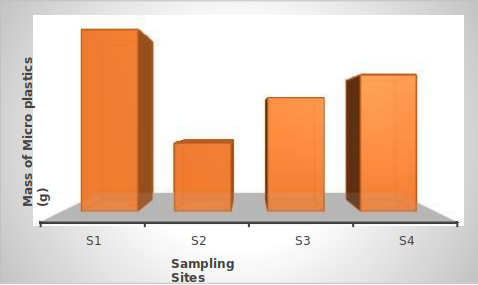Preliminary Investigation of Microplastic as a Vector for Heavy Metals in Bye-ma Salt Mine, Wukari, Nigeria
Keywords:
microplastics, sediment, aquatic, heavy metals, functional groupAbstract
This study is aimed at the preliminary investigation of microplastics as carrier of heavy metals pollution in surface sediment. Heavy metals concentration was determined by FAAS while microplastics characterization was analysed by ATR-FTIR spectrophotometer. The results obtained showed high level of lead (Pb) concentrations which ranged from 21.37 - 32.80 mg/kg across the sampling sites while Cd has the least concentration between 0.04 - 0.80 mg/kg. The concentration of Pb and Cd were above the USEPA permissible limit in sediment. The following absorption bands; 2978.19, 1728.28 and 1458.23 cm-1 with the functional groups; C-H stretch, C=O stretch and CH2 bend indicates the presence of Ethylene vinyl acetate (EVA) in site S2 and S4 respectively. Other microplastics found in the sampling sites are Nylon, Nitrile, Polycarbonate and Poly propylene. This indicates that there is identical distribution of the microplastics in the sampling sites. The quantities of microplastics isolated ranged from 8.11 - 8.16 g across the sites. Aquatic organisms fed on these polymeric materials because of their unique appearance. Hence, heavy metals adsorption will lead to higher concentrations on microplastics which could be ingested and lead serious complication in their intestine.

Published
How to Cite
Issue
Section
Copyright (c) 2021 Journal of the Nigerian Society of Physical Sciences

This work is licensed under a Creative Commons Attribution 4.0 International License.







